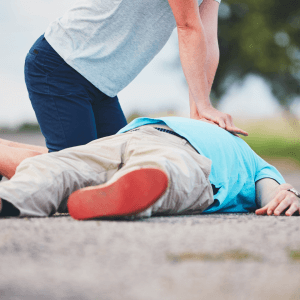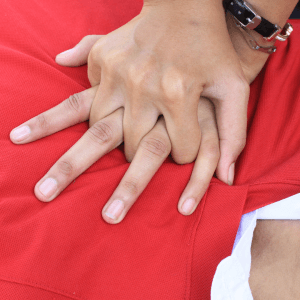When Should You NOT Perform CPR

When Should You NOT Perform CPR first aid ?
Compressions during cardiopulmonary resuscitation (CPR) should ideally continue until the person is fully recovered. However it is often not as simple of that.
There are not many circumstances when you should stop CPR. However, there are certain situations in which giving further compressions is no longer needed or possible.
There are three distinct rules to stopping CPR:
- When a doctor—or some other appropriate emergency medical provider, like a paramedic—tells you to stop.
- When you become exhausted and cannot continue
- When the patient begins yelling at you to stop hitting him in the chest (this really happens). In other words, when the patient gets better.
Here, we will take a more detailed look at situations where you should stop giving CPR:
Notice Signs of Life
If the patient opens their eyes, moves, makes a sound, or starts breathing, you should stop giving CPR. However, when you stop and the patient becomes unconscious again, you should resume CPR. Here are some examples of signs of life:
- Purposeful movement. If a person moves their arm, lifts their head up, grimmaces etc.
- Making noises. There may be involuntary sounds that occur during CPR. However, to stop CPR you are listening for obvious sounds such as moaning or speaking.
- Eye movement. The opening of eyelids is not enough reason to stop CPR unless there is eye movement. You’re looking for the victim to be blinking their eyes, looking around, or focusing on objects.
Fatigue
CPR is exhausting and you can become fatigued in just a few minutes. This is why help, if available, is so crucial. It’s not uncommon for CPR first aid to take 30min or longer before a person responds. Unfortunately this is not like the movies, where a few chest compressions does the trick.
A person burns approx 165 calories after 15min of CPR. When giving CPR, know that the younger a person is, the longer you should attempt to perform CPR because of the increased likelihood of resuscitation
If two people are performing CPR, you must switch after about 5-10 minutes of performing CPR. The two people should continue to perform CPR until the patient revives or they are taken to hospital.
When emergency services arrives, they may request that you continue doing compressions if you’re willing and able while they get their equipment in place. Other times, you may be asked to stop so they can take over immediately.
If your near the city, ambulances generally arrive in 5-10 minutes. However, in rural or remote areas, the response time may be 30 minutes or significantly longer.

Life in Danger
Remember that your life is the number one priority in case of an emergency. You should stop performing CPR in case it’s no longer safe to perform the technique.
For instance, If the person is in the line of oncoming traffic and is unable to be moved, there is a spreading fire or you are in danger of being crushed or falling from a great height. Your safety always comes first.
Patients with Terminal Illnesses
You should stop giving CPR if you find out that the patient has signed an order that no one should revive them in case of a cardiac arrest.
CPR is so easy to learn, but you must learn from people who can give you the correct technique and know how. You could save someone’s life one day. You can learn with us! we run first aid courses all over Australia – Take a look at our courses and lock in your date today!
There are so many factors to take into account before making the decision to stop CPR. In most cases, you will never be forced to make that decision. With very rare exceptions, you can usually count on emergency services arriving and taking over before you would ever think about stopping.
If your first aid needs updating or you have never done a first aid and CPR course before, prepare yourself for the eventuality and book a course with us today.
Want more? We’ve got you covered…
Our Baby First Aid Courses
Our baby first aid courses are available in person in your home and online. We run classes in your home with groups of 2, 4 or up to 10 in Sydney & Melbourne and you can book in 3 easy steps!
- Pick your class
- Follow the prompts to purchase
- We will contact you within 24 hours to lock in your date of choice
Our First Aid Certificate Courses
We run most of the popular first aid courses Australia wide. HLTAID011 Provide First Aid, HLTAID009 Provide CPR, HLTAID012 Provide First Aid in an Education & Care Setting, RAMOAP (anaphylaxis), Mental Health first aid and CPR/LVR to name a few.
Book your public spot online or contact us if you have a group of 5+ people for onsite training.
Here are some other resources you may enjoy!
FREE GUIDE: Your Virtual Baby First Aid Kit
FREE GUIDE: Introducing Common Allergy Foods & Allergic Reactions
FREE Workplace Emergency Preparedness Plan: Grab this at the bottom of every page!
Follow for baby & child first aid and allergy info and tips on Instagram, TikTok & Facebook all @thenestcpr

